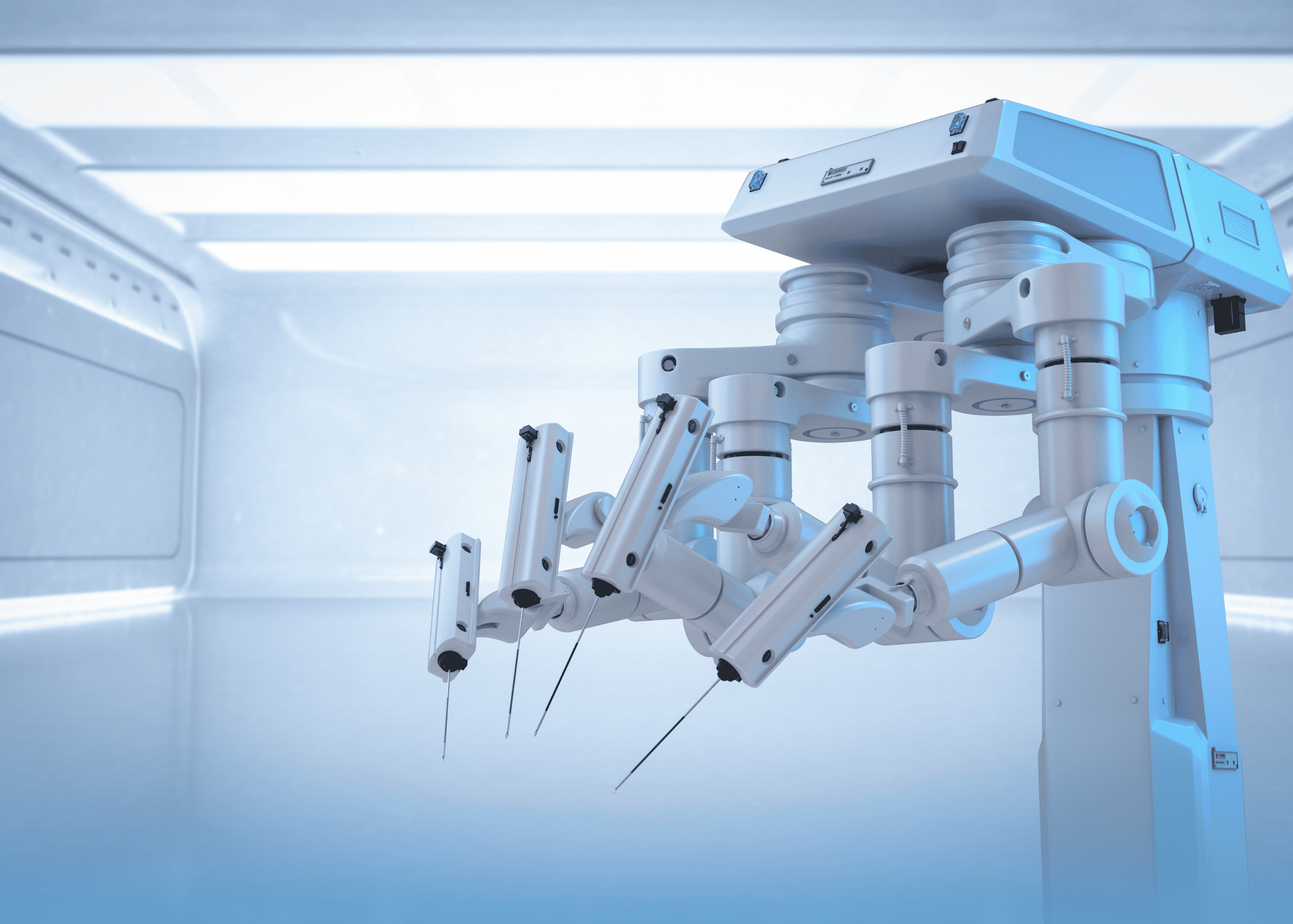Introduction
Burjeel Medical City’s Advanced Gynecology Institute continues to push the boundaries of minimally invasive gynecological surgery with a remarkable case that demonstrates the power of combining medical optimization with robotic surgical techniques. This complex case highlights how innovative approaches can transform previously inoperable conditions into successful fertility-preserving procedures.
Patient History
A 49-year-old single female was referred from the Obstetrics and Gynecology department with debilitating symptoms including excessive and prolonged vaginal bleeding, a palpable abdominal mass, and persistent anemia causing fatigue, weakness, and lethargy. The condition had significantly impacted her daily activities and quality of life, affecting her ability to concentrate and function normally.
Clinical Assessment
Diagnostic imaging including ultrasound and MRI revealed multiple large fibroids that had completely distorted the uterine architecture. The uterus had expanded to such a massive size that it left virtually no space to enter the abdominal cavity laparoscopically. Additionally, a previous attempt at uterine artery embolization had failed to resolve the condition, further complicating the management approach.
Treatment Strategy
Despite the complexity of the case, the patient strongly expressed her desire to preserve her uterus for future fertility potential. She was also concerned about the cosmetic implications of a large vertical abdominal scar that would result from traditional open surgery.
The medical team developed an innovative stepwise approach to convert what appeared to be an inoperable case into one that could be managed with minimally invasive techniques:
- Medical Optimization: The patient was prescribed six monthly doses of GnRH analog (3.75 mg) with the following objectives:
- Induce temporary amenorrhea to reduce menstrual blood loss
- Gradually shrink the fibroids and overall uterine mass
- Create sufficient space for a minimally invasive surgical approach
- Improve hemoglobin levels to ensure safer surgery
- Response Assessment: After completing five doses, the patient showed remarkable improvement with:
- 40% reduction in fibroid size
- Increase in hemoglobin to 13 g/dL
- Multidisciplinary Planning: The Advanced Gynecology Institute team collaboratively reviewed the case and determined that robotic myomectomy was now feasible, allowing for preservation of the uterus while avoiding a large abdominal incision.
Surgical Approach
Under the guidance of Dr. Sandesh Kade, Specialist in Laparoscopic, Endometriosis & Pelvic Floor Repair Surgeries, and with anesthesia support from Dr. Baby Thampuru Vamadevan, a robotic myomectomy was successfully performed.
The procedure resulted in:
- Removal of 21 uterine fibroids
- Excision of a large left ovarian cyst discovered during surgery
- Specimens were extracted through a minimal 2 cm incision, as they were too large for standard laparoscopic extraction ports
Clinical Outcome
The patient tolerated the procedure well and was discharged in stable condition. The surgery successfully preserved her uterus while avoiding the large abdominal scar that would have resulted from traditional open surgery.
Challenging Aspects
This case highlights several challenges in gynecological surgery management:
- Extremely large fibroids leaving virtually no space for standard laparoscopic access
- Previous failed uterine artery embolization
- Balancing the patient’s strong desire for fertility preservation against the technical complexity of the case
- Need for extensive preoperative medical optimization to create conditions suitable for minimally invasive surgery
The Role of Robotic Surgery
Burjeel Medical City’s Da Vinci XI Robotic Surgery System proved instrumental in this case, providing:
- Enhanced visualization through 3D imaging
- Improved precision with articulated robotic arms
- Better tissue manipulation during the complex dissection
- Ability to perform intricate suturing for uterine reconstruction
- Minimal tissue trauma compared to open surgical approaches
Conclusion
This case exemplifies how combining thoughtful medical optimization with advanced robotic surgical technology can transform previously inoperable gynecological conditions into successful minimally invasive procedures. The patient-centered approach that prioritized fertility preservation and cosmetic outcomes while effectively addressing the underlying pathology represents the cutting-edge capabilities available at Burjeel Medical City’s Advanced Gynecology Institute.


